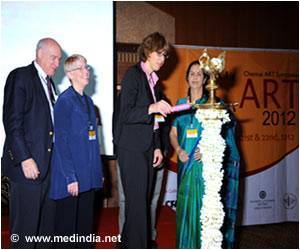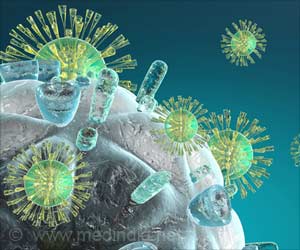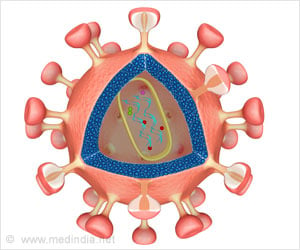Partly because of HIV virus’ intense ability to mutate HIV has evaded vaccine-makers for thirty years. Physical scientists and clinical virologists from the Massachusetts Institute of Technology (MIT) and the Ragon Institute in Cambridge, Mass., have identified a promising strategy for vaccine design using a mathematical technique that has also been used in problems related to quantum physics, as well as in analyses of stock market price fluctuations and studies of enzyme sequences. The team, led by Arup Chakraborty of MIT and Bruce Walker of the Ragon Institute, will give an update on its work at the Biophysical Society 56th Annual Meeting, held Feb. 25-29 in San Diego, Calif.
Vaccines prime the immune system to target molecular signatures associated with a particular pathogen. But HIV's ability to mutate has made it difficult to identify reliable vaccine targets. In their search for a new type of target, the team from the Ragon Institute did not focus on individual amino acids. Instead, the researchers sought to identify independently evolving groups of amino acids where, within each group, amino acids mutate in tandem (meaning that they rely on one another to maintain the viability of the virus). In particular, they looked for groups of amino acids within which combinations of mutations would have a greater chance of making the virus unviable. By staging a multi-pronged attack against these regions of HIV, the researchers reasoned, they might be able to trap the virus between two bad choices: be destroyed by the immune system, or mutate and destroy itself.
With a mathematical tool called random matrix theory, the team searched for high-order evolutionary constraints in the so-called Gag region of HIV. The researchers were looking for collectively co-evolving groups of amino acids with a high number of negative correlations (meaning multiple mutations would destroy the virus) and a low number of positive correlations (meaning the virus could survive multiple mutations). They found this combination in a region, which they call Gag sector 3, that is involved in stabilizing the protein shell of the virus: too many mutations here, and the virus' structure would collapse.
Interestingly, when the team studied HIV-infected individuals whose bodies are naturally able to fend off the virus' attacks – so-called "elite controllers" – they found that these individuals' immune systems preferentially targeted Gag sector 3 over other proteins.
At the moment, the study authors are working to extend their methods to HIV proteins beyond Gag. The team is also developing elements of the active components of a vaccine that would prime the immune system to selectively target Gag sector 3 proteins. They expect to begin testing in animal models soon.
The presentation, "Analysis of collective coevolution in HIV proteins suggests strategies for rational vaccine design," will be presented by Dr. Chakraborty's graduate student Karthik Shekhar at 12:30 p.m. on Sunday, Feb. 26, 2012, in the San Diego Convention Center, Room 24ABC.
Source-Eurekalert













